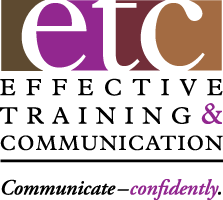The good news about sending emails and texts in the workplace is that you can transmit your messages instantly, saving you time and extra effort. The bad news about those texts and emails is that you can transmit your message instantly – often omitting reviewing, editing and rewriting. Bad idea.
So, let’s take a moment to review the Power of Editing or re-writing and recommitting to this powerful step in the written communication process in your workplace.
It’s not like this is a revolutionary new concept. Everyone knows about editing – they learned about it in grade school. But, few do anything about it. The leave SpellCheck on autopilot and let it go at that. So, they’ll know the words they used are probably spelled correctly. What they won’t know is if those are the right words, enough words, too many words or the best words
Let’s assume you planned your important email and wrote it effectively. Since your readers will never see your first draft, you only need to be concerned with your final draft. And if your first draft IS your final draft, you miss out on the opportunity to make it better and increase the probability that you’ll accomplish your communication objectives.
So, invest the time to improve your writing by editing it for content, style and appearance.
1. Editing for Content
Ask these essentially left-brain questions of your document:
- Does this email, text or document solve my communication problem?
- Does it accomplish my objectives?
- Does it have the right amount of detail in the right format for my intended readers to be able to understand it in a hurry?
- Do the format and structure support the message and reader?
- Is it clear? If necessary, show it to colleagues or your manager. Ask for feedback.
2. Editing for Style
Now, put on your right brain hat and evaluate the word choices you made:
- Did you use short, simple, specific and active words?
- Did you use simple and uncluttered phrases?
- Do your sentences average 15 words or less?
- Are your paragraphs less than 10 lines?
- Did you use active voice wherever possible?
- Is the tone of your message appropriate?
- What does your message sound like? Try reading it aloud.
- How does it feel? Does it sound like the person you want readers to think you are?
3. Editing for Appearance
Finally, give it a final assessment from the appearance perspective. How does the document look on the computer screen or smart phone?
- If your paragraphs are too long, break them up and use text breakers.
- Use sub-headings and indents to separate content points.
- Use extra spaces to set off main sections.
- Add eye-pleasing white space to increase reader ease.
- How neat and clean does your email or attachment look?
Some Final Rants
- Avoid the temptation to multi-task and perform all of these tasks together. Assess each set of components in a separate pass because you’ll use different evaluative criteria for each.
- For those who think the simple text or email isn’t important enough to warrant this much time and effort, accept the reality that everything you write at work can position you and project your image as a competent professional … or detract from it.
- Make sure the final draft your readers see is the best thing you could come up with in a reasonable amount of time and effort, not the first thing you thought of the thing you usually think of.\
- For those workplace writers who feel they don’t have time to do it right (the first time), they usually will find the time to do it over when it misfires or generally makes the big dog unhappy.
Happy Editing!
